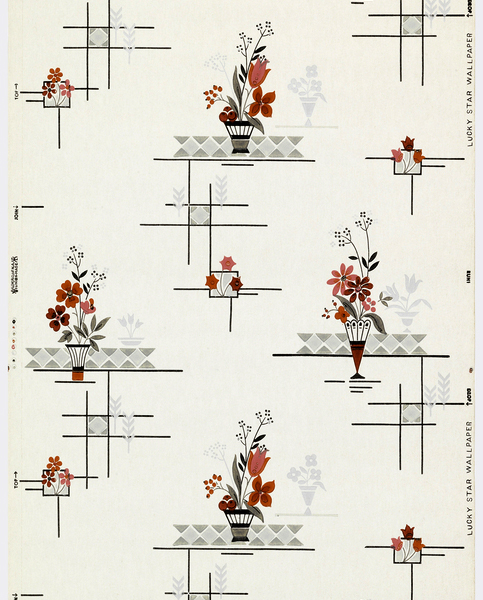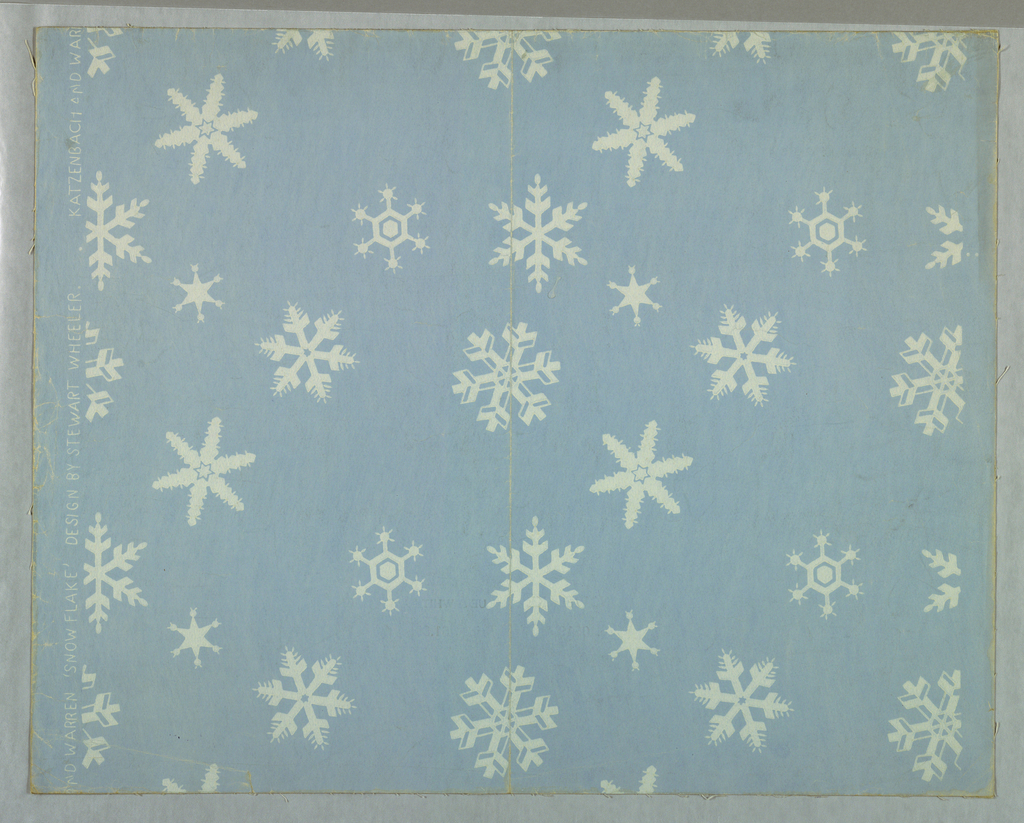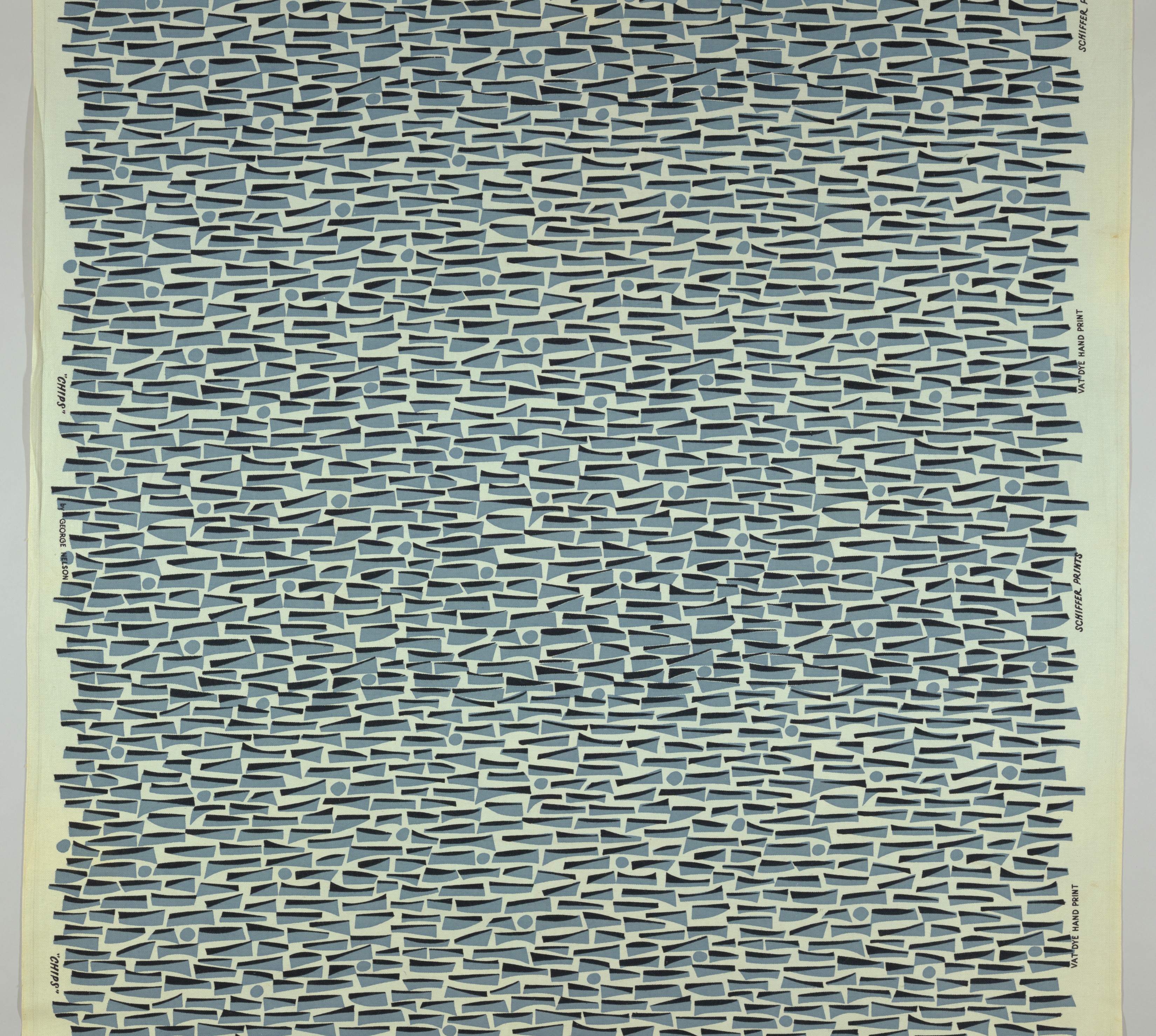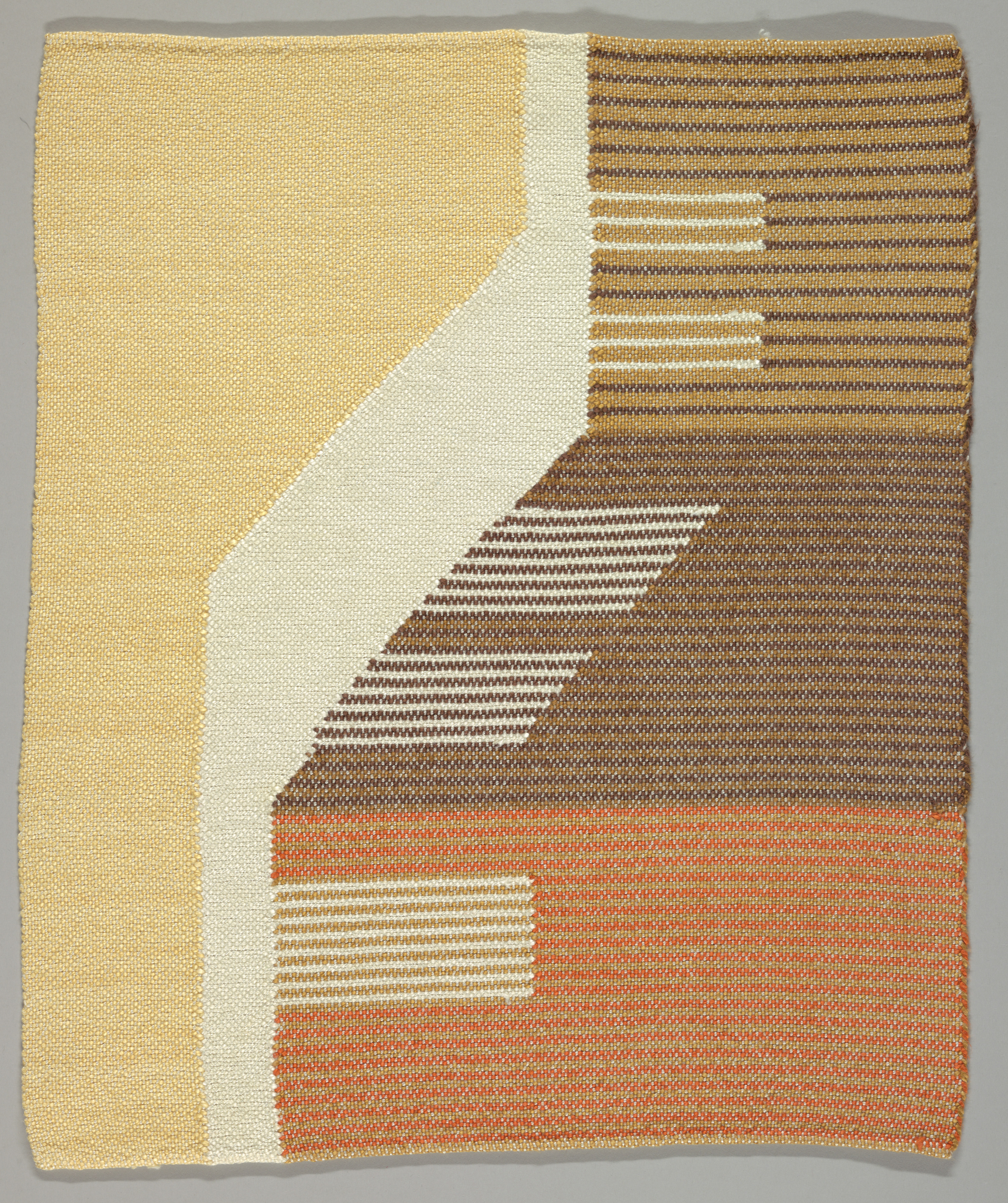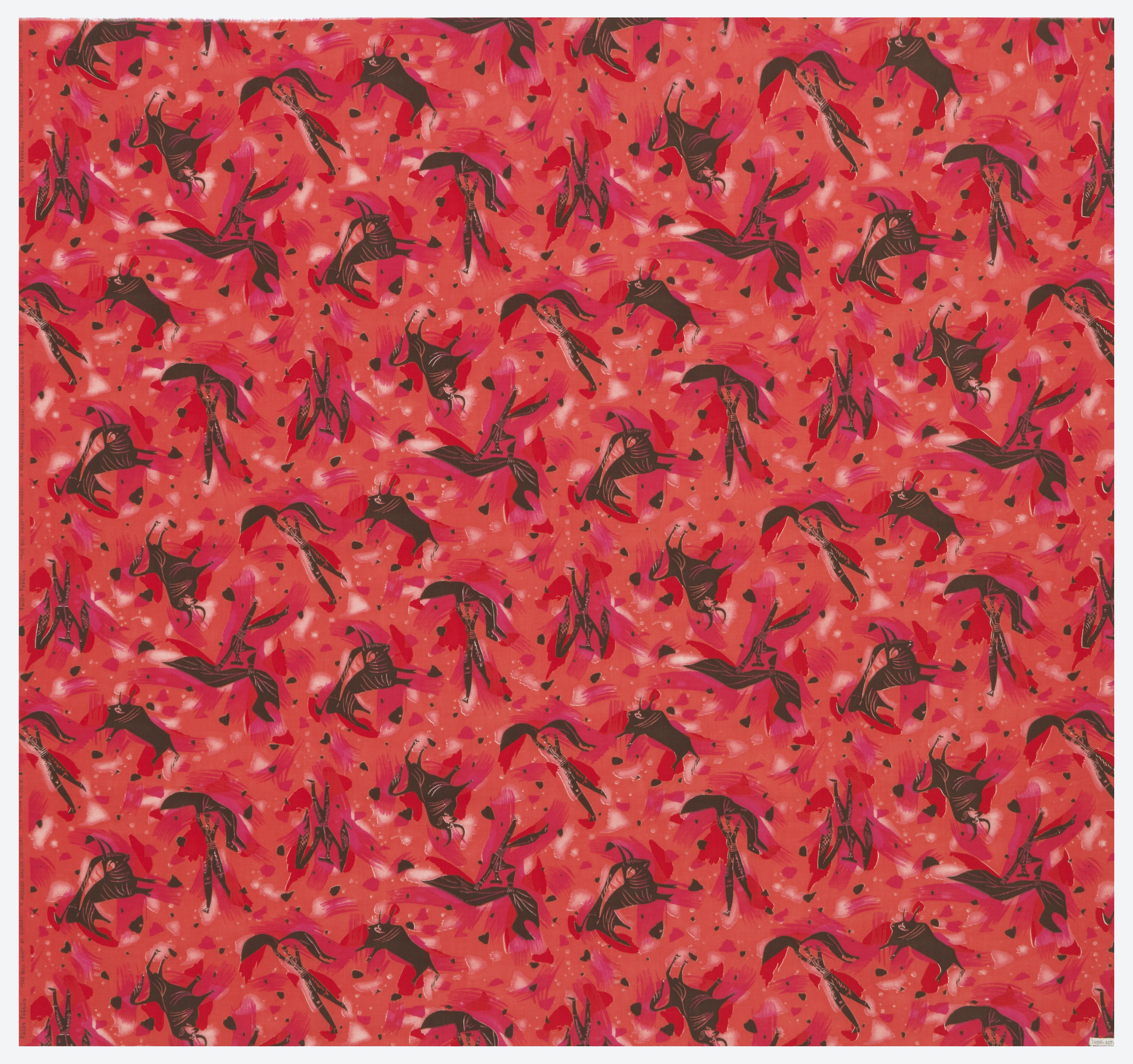This is a fun, modernist wallpaper design most likely intended for a kitchen or breakfast nook. The high contrast colors, and the expanses of plain white background, give this design a very clean and fresh look. Three different bouquets of very stylized red flowers, each in a different vase on a shelf, is set against...
This is one of a very few wallpapers showing winter-related motifs. The design contains six different snowflakes that repeat twice across the width of the paper. This pattern was introduced in 1929 and is designed in a modernist style. Even today it still looks fresh and modern, printed in a single color on a solid...
Alexander Hayden Girard made an indelible (and colorful!) impact on 20th century modernist textile design. At the helm of Herman Miller’s textiles division, his playfulness provided a warm complement to the stark simplicity of furniture designs of Charles and Ray Eames and George Nelson. As its title suggests, Ribbons features overlapping, irregular vertical rectangles reminiscent...
In the aftermath of World War II, a number of textile producers attempted to revitalize the industry by enlisting recognized personalities in art and architecture to design screen prints. “Perhaps the most outstanding name collection is Stimulus Fabrics produced by Schiffer Prints,” Alvin Lustig wrote in American Fabrics Magazine in 1951. “There was not a...
This textile study sample was woven by Lydia van Gelder in preparation for a larger wall hanging, “Houses on a Street” that she created for the 1939 Golden Gate International Exposition in San Francisco. Serving as a diminutive sample for the larger piece, it is tapestry woven – double interlocked with extended dovetailing for shading....
In 1953, Dan Fuller, president of Fuller Fabrics, invited five of the twentieth century’s most distinguished artists—Pablo Picasso, Fernand Léger, Marc Chagall, Joan Miró, and Raoul Dufy—to collaborate on a line of textiles to be called the Modern Master Series. The concept was unique in that the artists were not commissioned to produce original patterns...
Personally, I am partial to Richard Meier’s approach to architecture. According to Meier, a building is an act of “willful artificiality;” a “man-made” spatial construct that functions as a receptacle for experiencing the world of nature. Meier’s white walls act as nature’s film screen capturing ever-changing patterns of reflected color and light. While Meier credits...
